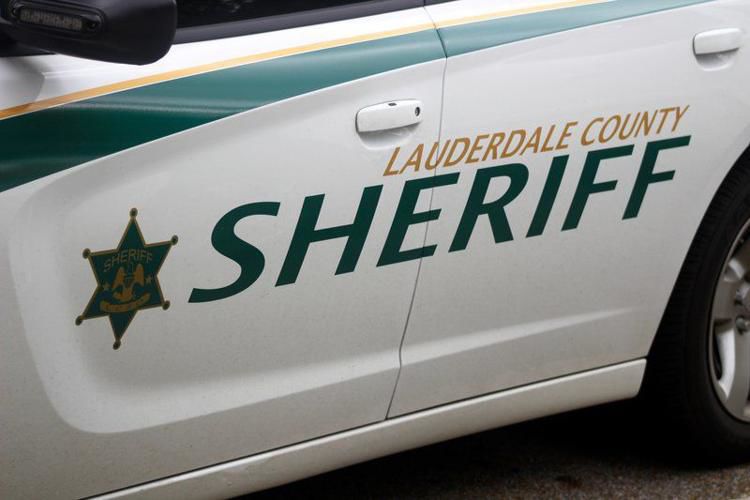‘It’s coming’: Slow reporting means slow response to approaching opioid crisis in Mississippi
Published 2:00 pm Saturday, March 3, 2018

- A state map of overdose deaths, according to the Mississippi Bureau of Narcotics
While opioid use and overdoses climb across the country, reported overdoses remain low throughout much of East Mississippi, with most counties reporting only one death a year or none at all.
Newton County Coroner Danny Shoemaker said he hadn’t seen a single drug overdose in both 2016 and 2017, including prescription opioids and illicit forms such as heroin and its deadlier, more fatal cousin fentanyl.
Trending
“It’s coming; I know it is,” Shoemaker said. “It could even be here, but I can’t prove it.”
Shoemaker and other coroners are required by law to report overdose deaths within 24 hours. Overdoses can be difficult to identify, however, and some coroners prefer to wait for confirmation from the State Crime Lab’s analysis and toxicology report.
“Unless we see something like a needle, we really don’t know if it’s drugs or not,” Lauderdale County Coroner Clayton Cobler said. “I’ve got one (suspicious death) from Christmas Eve that I’m still waiting for the results.”
The State Crime Lab, as reported by Mississippi Today, has been understaffed and under-funded for the last two years, with an evidence backlog to match. Three medical examiners completed just less than 1,700 autopsies, twice the annual amount of autopsies recommended by the National Association of Medical Examiners, which recommends 250 per year per examiner to ensure accuracy and avoid burnout.
Shoemaker had his own example of slow reporting by the lab. Results of a lab report on a baby who died in January 2016 arrived at his office on Feb. 12, 2018, he said.
While the infant’s death was ruled to be a natural death, Shoemaker said that proving deaths are caused by opioid overdoses is difficult without the State Crime Lab’s confirmation.
Trending
In particular, toxicology tests and blood work analyses take the longest, with only three forensic scientists in place of the desired eight or nine.
This hampers the lab’s abilities to analyze evidence sent by law enforcement agencies and delays complete reports for the numerous suspicious deaths coroners send for autopsies.
“We can’t throw red flags unless we can prove it,” Shoemaker said.
Targeting resources and efforts
In 2016, the Mississippi Bureau of Narcotics reported 211 overdose deaths in the state, but only 99 of those deaths, or 47 percent, were reported by coroners. Of those deaths, 135 were attributed to an opioid overdose. With only 27 of 82 coroners reporting, the remaining overdose deaths were verified by death certificates.
John Dowdy, the director of MBN, said in 2017 he wanted to increase coroner reporting to give MBN an idea of where “hot spots” for these drugs existed and how they spread throughout the state.
He said that coroners reporting these suspicious deaths in a timely fashion enables the agency to target resources in these counties and take dealers off the streets.
If a county doesn’t report any overdoses, it risks assistance from the state agency.
“It just helps us target our efforts,” Dowdy said.
He urged his field agents to personally connect with each coroner in their district to give coroners an idea of who to contact after an overdose, giving the agency enough time to go to the county and investigate the trafficking of drugs themselves.
With this push, coroner reporting nearly doubled, with 49 coroners reporting 249 overdoses in the state for 2017, with 177 deaths attributed to opioids.
“Our relationships with coroners has absolutely skyrocketed,” Dowdy said. “I think coroners are responsive to the messaging we’re putting forth.”
These numbers may change, however, as MBN finalizes its data, Dowdy said.
According to the Centers for Disease Control and Prevention, 42,249 people died from overdoses in 2016, with West Virginia and Ohio reporting the highest rate of deaths with 884 deaths (52 per 100,000) and 4,329 deaths (39.1 per 100,000) respectively. Mississippi has a rate of 12.1 deaths per 100,000, according to the CDC.
In East Mississippi, Lauderdale and Neshoba county reported two overdose deaths each in 2017 and Kemper and Clarke county each reported one. Newton and Jasper Counties reported none, according to MBN.
Dowdy noted three hot spots in the state, in the Jackson metro area, with 30 reported overdose deaths in Hinds County alone; The Gulf Coast, with 38 overdoses reported in Harrison County and 17 in Pearl River; and the greater Memphis area, with 20 overdoses reported in DeSoto County.
Dowdy added that some death counts may be misleading, using a recent overdose death in Rankin County as an example. A Simpson County resident crossed county lines to purchase heroin from someone in the Jackson area.
“And he never made it back,” Dowdy said.
This death counts as a Rankin County death, however, even though the person lived in Simpson County. In counties near state borders, the problem is even more difficult to track, especially near hot spots such as Memphis and New Orleans.
“If they’re in DeSoto County they might go up to Memphis and never make it back across the state line,” Dowdy said.
Changing times, spreading awareness
Over the course of the last year, MBN used overdose data to distribute Naloxone, a medication designed to rapidly reverse opioid overdose, to law enforcement agencies.
In that time, law enforcement officers used Narcan (the nasal version of Naloxone) 31 times, saving 29 lives.
Emergency Medical Services are also required to track their use of Naloxone, and used it 1,546 times in January through September of last year, Dowdy said. Dowdy didn’t have a further breakdown available.
Cobler, who is also the director of Metro Ambulance in addition to being the Lauderdale County coroner, said each ambulance carries two vials of Naloxone, for a total of 32 vials across 16 vehicles, which could hold several doses depending on the situation.
According to a report released by the Mississippi Department of Health, EMS services administered Naloxone 39 times in Lauderdale County between January and September of 2017. Harrison County and Hinds County reported 215 and 181, respectively.
However, Cobler warned that distributing Narcan should be a judgement call, something that should only be distributed little by little.
With law enforcement officers and other first responders encountering fentanyl, heroin’s far-deadlier and more potent cousin, and getting accidentally exposed via skin contact, law enforcement agencies have started carrying Narcan.
Stemming the flow
The Mississippi Department of Health recently held town hall meetings across the state to discuss the use of opioids, both legal and illegal, in local areas, including a co-presentation with MBN in Meridian in early October. The agencies established the website standupms.org to gather together testimonials, educational materials and treatment availability statewide.
With these small improvements, the state attempts to educate the public while also preparing for the future. Many of Mississippi’s neighboring states have already seen sharp increases in the use of opioids and drug overdoses, including Tennessee and Louisiana.
For now, Mississippi is ranked 41 of 50 states in terms of overdose deaths by the CDC but both Tennessee and Louisiana are in the top 25 states.
Still, for MBN, coroner reporting remains one of the most effective ways to help agents track down the illicit forms of opioids, stemming the flow of drugs into the state and across county lines.
249 confirmed overdoses reported to MBN
177 of those deaths were determined to be opioid related
7 of those deaths were attributed to a combination of heroin and fentanyl
48 people died from fentanyl overdoses
31 people died from heroin overdoses
91 of those opioid deaths were perscription only
Dowdy said that the agency didn’t want to tell coroners how to do their jobs, but rather stressed the importance of notifying MBN so MBN can track the presence of drugs. However, Dowdy acknowledged that some coroners, such as Shoemaker, might not be reporting overdoses simply because they have none.
“I still think we have some coroners not reporting for whatever reason,” Dowdy said. “(But) some coroners may even have no deaths.”
Shoemaker estimated that 90 percent of the roughly 130 cases he worked annually are hospice care deaths, or roughly 117.
In 2018, Shoemaker reported his first suspicious death as a possible overdose to the MBN.





